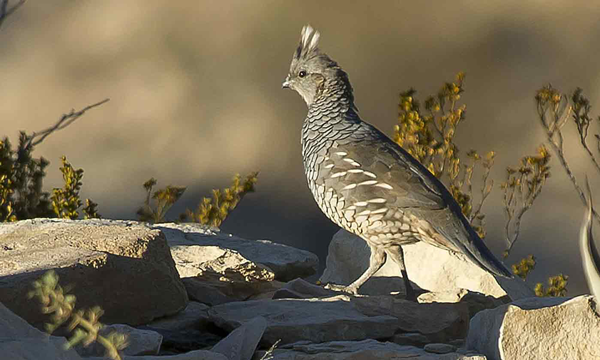
Texas Wildlife Research Program
Pittman-Robertson Grant Highlights
Each year, the TPWD Wildlife Research Grants program awards between $1 and $2 million in federal Pittman-Robertson Act funds for research on Texas’ native wild birds and mammals. This process starts with an annual review by Wildlife Division staff to identify our current, greatest research needs for managing these species. Based on that review process, we then post requests for proposals online for those research needs, and the Wildlife Division follows a competitive review process to award project proposals submitted by qualified Universities or non-governmental organizations. Below are the highlights of projects awarded over the last 7 annual funding cycles of the program (from fiscal year 2019 onward).
Fiscal Year 2019
Influence of Woody Vegetation Patterns on Scaled Quail Demographics
Principal Investigators: Blake Grisham and Brad Dabbert — Texas Tech University
Sarah Fritts — Texas State University
TPWD Project Coordinator: John McLaughlin
Status: Completed

Scaled quail bird.
Project Summary: Arizona scaled quail, a small upland game bird species, are influenced by land cover and weather, which affect habitat selection and can subsequently result in variations in survival and reproductive metrics. This research project investigated the fine-scale habitat selection, among other factors, of scaled quail in relation to thermal profiles and vegetation composition and structure amid documented habitat changes in the Texas Panhandle. The project objectives were to assess temperature profiles and vegetation structure and composition associated at used locations from GPS and VHF radio-tagged scaled quail; pair these data with randomly selected locations; and quantify nonbreeding, nesting and brood-rearing fine-scale habitat selection.
Researchers found that scaled quail selected locations across all seasons that maximized thermal homeostasis, protection from predators and escape possibilities. Scaled quail selected areas with more shrub cover and cooler temperatures during nesting and brood-rearing seasons and areas with warmer temperatures but no difference in vegetation composition and structure during the nonbreeding season. Temperature was negatively correlated to shrub cover and played a crucial role in scaled quail fine-scale habitat selection across all seasons. Documented increases in shrub cover and temperature profiles on fine-scale habitat selection ranged from benign/beneficial (nonbreeding, brooding) to beneficial (nesting) for scaled quail in the Texas Panhandle. These results corroborated numerous assessments suggesting that ground-dwelling avifauna in grassland systems select vegetation as proximate cues for habitat selection. However, temperature may be the ultimate factor driving selection, especially at nest locations. Additional data are now being analyzed to determine how vegetation and land use change are impacting quail populations at the ranch and regional levels.